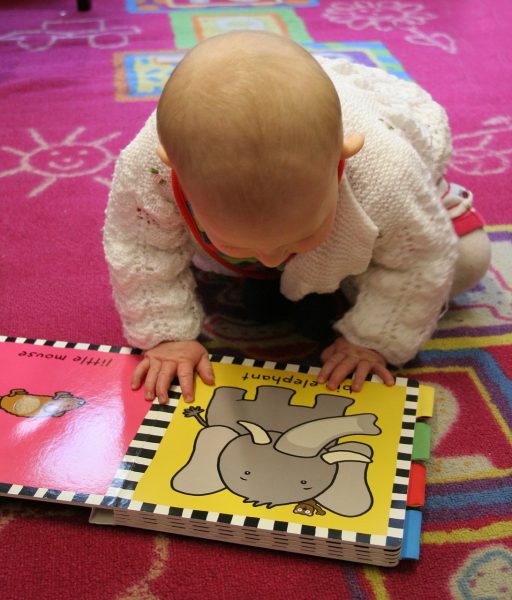The Best Way to Learn Phonics: The Ultimate Guide to Mastering Phonics
The Best Way to Learn Phonics: Learning phonics is a great way to help children learn to read and spell. Phonics is a system that helps children learn the sounds of letters and combinations of letters that make up words. It can help children make connections between the letters they see and the sounds they hear, making it easier for them to sound out unfamiliar words.
With the right approach, learning phonics can be fun and engaging for children as they begin to recognize and pronounce words. There are a variety of methods and strategies for teaching phonics, so it’s important to find an approach that works best for your child.

The Benefits of Using Phonics to Teach Reading to Children
![]()
Phonics is a crucial component in teaching children to read and write. While there are several different approaches to teaching reading, phonics provides an effective and structured way for children to learn how to read and write. Here are a few of the key benefits of using phonics to teach children to read.
- 1. It helps children learn the sounds of letters: Phonics helps children learn the sounds associated with each letter of the alphabet. With this knowledge, children can then decipher the sounds of words and recognize them when they see them in print. This knowledge also helps children become better readers and spellers.
- 2. It builds the foundation for literacy: Through phonics, children learn the basics of reading and writing. This foundation is essential for them to become proficient readers and writers as they grow older.
- 3. It supports comprehension: By teaching children the sounds of the letters and how they interact with each other to form words, they will be better able to understand what they are reading.
- 4. It increases fluency: When children learn to read with phonics, they are better able to recognize and read words quickly and accurately. This increases their reading fluency, which helps them become stronger readers over time.
Phonics is a great way to help children learn to read and write. Through phonics, children can develop the phonemic awareness necessary to become proficient readers and writers. As they learn the sounds of letters and how they work together to form words, they will be better able to comprehend what they are reading and increase their reading fluency.
Developing Phonemic Awareness Through Short Vowel Sounds
![]()
As a teacher, it is essential to equip students with the skills they need to become successful readers. Phonemic awareness is one of the most important pre-reading skills a student needs to develop. Phonemic awareness involves recognizing and manipulating the individual sounds (or phonemes) that make up words.
Short vowel sounds are a key component of phonemic awareness. To help students develop this skill, here are some activities that teachers can use in the classroom:
- 1. Rhyming Games: Have students listen for words that rhyme with a given word. For example, ask them to come up with words that rhyme with “cat”. The words that they come up with should all contain the short vowel sound.
- 2. Word Families: Word families are groups of words that contain the same short vowel sound. For example, the word family “at” includes cat, hat, sat, and mat. Have students identify all of the words in a given word family.
- 3. Letter Substitution: Have students replace the short vowel sound in a word with another short vowel sound. For example, ask them to turn “cat” into “cet”.
By using these activities, teachers can help students to develop their phonemic awareness and become successful readers.
How to Teach Letter Sounds and Letter Combinations
![]()
When teaching letter sounds and combinations to young learners, it is important to provide them with a strong foundation that will help them become confident readers and spellers. Here are some tips and strategies to get you started:
- 1. Start with the basics: Introduce each letter sound one at a time. Begin by teaching the short vowel sounds, as these are the most important sounds to learn. Then, introduce letter combinations such as “sh” and “th”.
- 2. Provide hands-on activities: When introducing letter sounds and combinations, it is important to provide children with hands-on activities that will help them to better grasp the material. For example, you can use letter tiles to spell out words, or you can have them draw pictures that represent the sound.
- 3. Use visuals: Visuals can be a great way to help children learn letter sounds and combinations. For example, you can use objects or pictures that start with the letter combination to help the children remember it.
- 4. Read aloud: Reading aloud is a great way to introduce letter sounds and combinations to children. When reading, focus on the words that have the letter sounds or combinations and encourage the children to point them out.
- 5. Practice: Once the children have been introduced to the letter sounds and combinations, it is important to give them time to practice. You can provide them with worksheets, phonics games, and other activities that will help them reinforce their knowledge.
By following these tips and strategies, you will be able to help your young learners become confident readers and spellers. With the right foundation, they will have the skills they need to become successful readers and writers.
Teaching Sight Words to Help Children Learn to Read
![]()
Teaching sight words to children is one of the most effective ways to help them learn to read. Sight words are words that are frequently used in the English language and are often the most difficult for children to learn. Sight words are also known as high-frequency words and are essential for early reading success.
When teaching sight words, it is important to focus on the most commonly used words. This will help the child become more familiar with the words and will help them learn to recognize them quickly. It is also important to choose words that are age-appropriate for the child. There are many resources available online to help you find the most commonly used words.
Once you have chosen the words, it is important to provide the child with opportunities to practice them. You can do this by using flash cards, playing word games, or even by creating a sight word wall with the words you have chosen. It is important to keep the activities engaging and fun to help the child stay motivated while they are learning.
It is also important to provide the child with feedback and praise when they are able to recognize a sight word. This will help them gain confidence and be more likely to use the words in their writing and speaking.
When teaching sight words, it is important to remember to be patient. Learning to recognize sight words takes time, and it is important to provide the child with the support and encouragement they need to keep trying.
By teaching sight words to children, you are helping them develop the skills they need to become successful readers. This is a great way to get children excited about reading and help them make progress in their reading journey.
Using Phonics to Help Kids Identify Different Speech Sounds
![]()
Using phonics to help kids identify different speech sounds is a great way to help them learn how to read. Phonics is a method of teaching children how to read and write by teaching them the sounds of letters and letter combinations. By learning the sounds of letters, kids can learn to decode new words by sounding them out.
When teaching phonics, it’s important to focus on individual sounds, rather than whole words. This helps kids to understand the individual sounds of each letter and letter combination. Kids can then use this knowledge to decode words they see or hear.
One way to help kids understand the different sounds of letters is to use picture cards. You can create picture cards with illustrations of words that start with each letter or letter combination. This helps kids to associate the sound of the letter or letter combination with the picture.
You can also use stories to teach phonics. Read stories aloud and ask kids to identify the sounds of the letters or letter combinations in the words. You can also ask kids to identify the sounds of the words in the story.
Finally, use activities like word games and puzzles to help kids practice identifying different sounds. These games can be used to help kids practice their phonics skills while also having fun.
Overall, using phonics to help kids identify different speech sounds is an effective way to help them learn how to read. By teaching kids the sounds of letters and letter combinations, they can learn to decode words and start reading. Use picture cards, stories, and games to help kids practice and reinforce their phonics skills.
Tips on Teaching Phonics to Students of All Grade Levels in the Classroom and at Home
![]()
Teaching phonics to students of all grade levels can seem daunting, but it doesn’t have to be. With the right strategies and materials, phonics instruction can be fun and engaging for both teachers and students. Here are some tips for teaching phonics in the classroom and at home:
- 1. Start with the basics. Before teaching more complex phonics concepts, review the basics such as the alphabet and the sounds of each letter. This will help lay a strong foundation on which to build.
- 2. Utilize multi-sensory instruction. Incorporate visual, auditory, and kinesthetic activities into your lessons. This will help students of all learning styles to better understand and retain the material.
- 3. Use a variety of materials. Incorporate books, games, flashcards, and other materials to keep students engaged and to reinforce the concepts.
- 4. Make it fun. Use fun activities, such as rhymes and songs, to help students retain information.
- 5. Encourage practice. Provide students with the opportunity to practice phonics concepts in a variety of contexts.
- 6. Be patient and encouraging. Encourage students to take their time and provide positive reinforcement for their efforts.
By following these tips, teachers and parents can successfully teach phonics to students of all grade levels in the classroom and at home. With the right materials and strategies, phonics instruction can be an enjoyable and rewarding experience for both teachers and students.
Frequently Asked Questions
![]()
1. What is Phonics?
Phonics is a method of teaching reading and writing by connecting the sounds of spoken English with letters or letter groups.
2. What are the benefits of learning phonics?
The main benefit of learning phonics is that it helps children to read and spell words accurately and quickly. It also helps them to understand the relationship between sounds and letters, which is the foundation of reading and writing.
3. What is the best way to learn phonics?
The best way to learn phonics is through systematic, explicit instruction. This means breaking down words into their individual sounds, and teaching these sounds in a logical sequence. It also involves teaching children to blend sounds together to read words.
4. What kind of activities can be used to help children learn phonics?
Activities to help children learn phonics include sounding out words, making words with letters, and playing phonics games. You can also use flashcards, picture books, and other materials to help children learn to recognize and blend sounds.
5. How can I encourage my child to practice phonics?
Encouraging your child to practice phonics can be done by making it fun and engaging. Make it a game or competition, and reward them for success. You can also use books and materials that are geared towards phonics to make it more interesting.
6. What are some tips for teaching phonics?
Some tips for teaching phonics include breaking words down into their individual sounds, teaching the sounds in a logical sequence, and using flashcards and picture books to help children recognize and blend sounds. Make sure to keep practice sessions short and fun, and reward children for success.
Conclusion: The Best Way to Learn Phonics
![]()
The best way to learn phonics is to combine direct instruction with plenty of practice and repetition. This can include listening to audio recordings, reading aloud, and engaging in a variety of games and activities.
It is important to be patient and consistent in order to ensure that the student is mastering the sounds and rules of phonics. Ultimately, the best way to learn phonics is to find a method that works best for the individual student.



